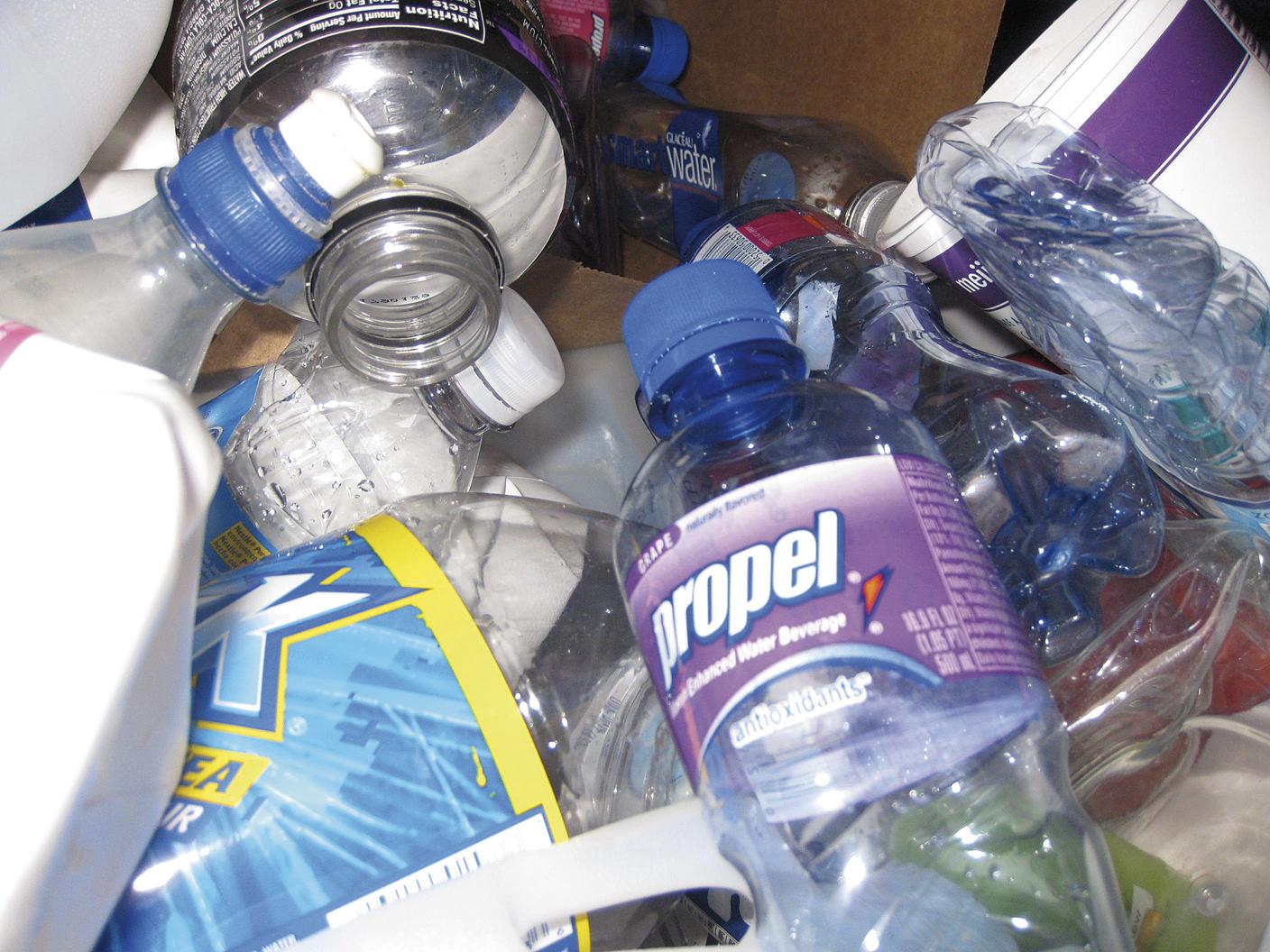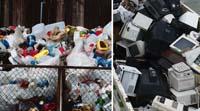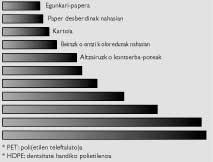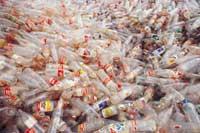The complex world of recycling of polymers
2011/10/01 Etxeberria, Agustin - EHUko kimikaria Iturria: Elhuyar aldizkaria

Recycling offers many possibilities for the treatment of waste. However, the possibilities vary greatly depending on the material to be recycled. The case of polymers (plastics, gums, etc.) is complex, especially when compared to metal, glass or paper.
In the manufacture of a product, the surplus fractions of polymer have always been taken, they have been crushed and reintroduced in the chain of manufacture. This is known as primary recycling. As for the treatment of waste, mechanical recycling --level 2 - is of greater importance. It is the recovery of the raw materials used in the production of a product. This process involves an energy and water saving by not having to obtain new raw material. This saving is very remarkable in the case of aluminium and glass, but it also occurs with polymers.
In the recycling of any raw material it is essential to separate well the products made with this raw material to achieve the maximum purity possible. On the other hand, it must be taken into account if the quality of the raw material decreases in each life cycle of the same. Metals and glass are recyclable over and over again in almost 100%, but polymers lose quality every time they are recycled.
In addition, not all polymers are equal and not all are recyclable. In general there are two types: the thermoplastics, which soften by effect of temperature, and the thermo-stable ones, which when grilled can not be softened (for example, the caps). The first ones are mechanically recyclable, increasing the temperature, melting them (or softening them), giving them a new shape and allowing them to cool. However, with polymers of type 2 it is not possible to do so because when heated they degrade before softening.
In principle, these two types are very broad groups -- due to the large amount of existing polymers -- but only a few assume a significant percentage of total industrial production. In the yellow garbage container, where containers and packaging are collected, there are examples known as low density polyethylene (films, bags), high density polyethylene (bottles), polypropylene (films, bottles), polyethylene (drink bottles) and polystyrene (yoghurts). All these polymers have a short life cycle. In addition, it must be taken into account that most of the containers are not composed of a single polymer, but in each of the parts of the container a different polymer is used, for example, the bottles of drink are made of polyethylene (PET) and the blocks in polyethylene.
When two polymers are mixed, they almost always form a heterogeneous mixture. The properties of the mix are very bad and it is not easy to recycle. In addition, all polymers are subjected to chemical reactions that are slowly degrading, with the consequent loss of properties. Therefore, the polymers that are recycled are mixed with those that are not used, as is the case with paper.
The current technology separates polymer mixtures well, since most of the products that are collected have good purity for their recycling. However, since the legislation does not allow the use of recycled polymers for products that are going to come into contact with food, they are used for the manufacture of other products made of plastics and, at present, the most urgent task is to introduce them in products of high added value (in this process, the high price of oil will be of help). For example, it is increasingly common to see in the labels of the garments that recycled polymers such as PET have been used for their production.
And what about plastics used in products that are not packaging or packaging? These residues (toys, household items...) we usually throw them occasionally and their daily volume is small, even if that of each unit is large! Therefore, the collection and separation strategy must be another organization. When a product becomes a waste, the most appropriate option is for the producer to assume responsibility for its management. Thus, in the need to give a solution to these residues, the design of the products will take into account the identification of the components and the facilities for their separation and recycling. It is to be expected that, in this way, the purity of the recycled material is greater than that obtained with the yellow container, but there is still much to improve in this new strategy.
There are other alternatives for thermostable and heterogeneous mixtures. The wells can be added to asphalt or used to make children's playgrounds. However, due to the scarce properties of these mixtures, recycling is usually low value, downrecycling and there may be problems finding commercial solutions to this entire fraction.
Therefore, it must be recognized that recycling of a part (because it cannot be separated well because it is dirty, degraded or thermostable) can always have more drawbacks than advantages.
There are other options for these cases. An alternative is the transformation of polymers through chemical processes in other raw materials. For example, the new PET polymer can be transformed into substances needed to synthesize. This is chemical recycling or level 3.
Since the combustion heat of plastics is equivalent to fuels, another option is to recover part of its value in the form of energy. Energy recycling or 4th.
Finally, if the composting option is fully established in the management of waste, the use of biodegradable polymers is a very attractive option for those cases in which organic waste mixed with plastics is generated. This means the elimination (as in the two previous cases), but at the same time the use or sale of the compost is beneficial. This is known as biological recycling.
In short, plastic recycling has certain limitations, but also greater advantages over other raw materials, since technology guarantees an increasingly adequate differentiation, and when it is not possible to make mechanical recycling or new management systems that are being implemented in other sectors, other alternatives can be applied.

Gai honi buruzko eduki gehiago
Elhuyarrek garatutako teknologia






